Everything You Need to Know for Great Results
Lilies have an elegance few other flowers can rival. With such big, exotic-looking blossoms, it seems like they would be tricky to grow, but they’re not! Here are eight tips that will help you succeed with these gorgeous summer-blooming bulbs.
Choose Your Type
Lilies are available in a variety of heights, flower styles and bloom times. Planting several different types of lilies will let you get creative with placements and pairings. It also stretches the bloom time. Keep in mind that Asiatic and Oriental-Asiatic hybrids flower in early summer. Midseason bloomers include species and trumpet types. Last to flower are the Oriental-Trumpet hybrids and Oriental lilies.
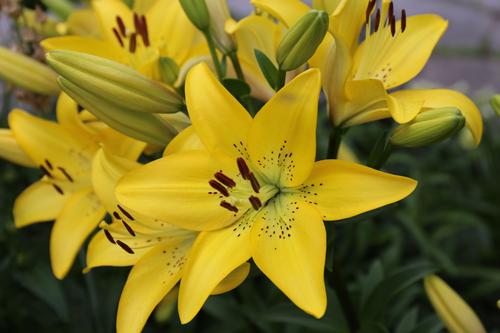
When to Plant Lily Bulbs
Lily bulbs may be planted in spring or fall, for blooms in mid to late summer. That said, most commercial growers don’t harvest their lily bulbs until the very end of the growing season. This makes it challenging to get the bulbs -- especially those that come from Holland -- delivered in time for fall planting. Instead, the bulbs are usually stored in coolers for the winter and are shipped in time for spring planting.
Handle the Bulbs With Care
Unlike tulips and daffodils, lily bulbs do not have a protective covering. For this reason, it’s important to plant lilies as soon as possible, so they don’t dry out. When planting, handle them gently to avoid breaking off the scales. A little mold on the outer scales is normal and no cause for worry.
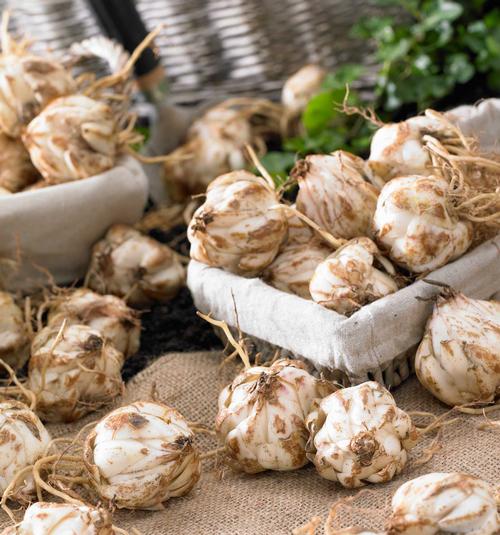
Provide Good Soil and Lots of Sun
Like most bulbs, lilies will not tolerate soggy soil. Other than that, any good garden soil is fine. At planting time, mix in some shredded leaves or other organic matter to encourage strong root growth and help keep the soil lightly moist. In dry climates, mulching the soil surface will reduce moisture loss and keep the soil cooler.
Lilies should be planted where they can get full sun or at least half day sun. In hot climates they appreciate being shaded from afternoon heat.
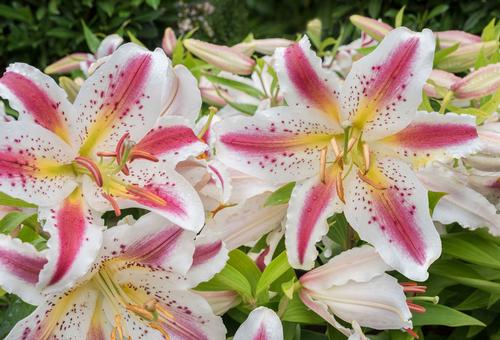
Give Lilies Room to Shine
Though lilies don’t take up a lot of space in the garden, they also don’t like to be crowded. The plants produce only a small amount of foliage and all of it is right on the stem. For healthy growth and good flower production, make sure the plants have enough room around them so sunlight can reach their stems and leaves.
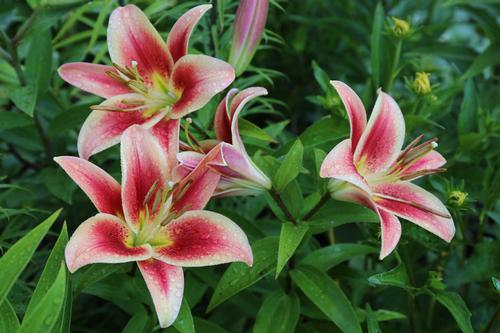
Plant in Groups
Lilies look best when they are planted in clusters of 3 or more bulbs. Dig a generous planting hole 8” deep. Put some all-purpose fertilizer in the bottom of the hole and mix it around to disperse. Add a few handfuls of loose soil back into the hole and then position the bulbs so they’re 6 to 7 inches deep (follow instructions on the packaging). Lilies also grow well in pots. Plant 3 bulbs per 2-gallon pot.
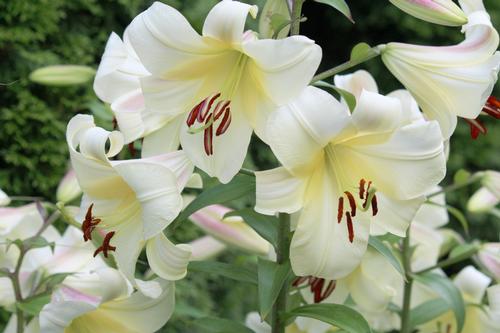
Plan Ahead for Cut Flowers
Lilies look beautiful in a vase. In fact, they’re one of the world’s most popular cut flowers. If you want to grow your own lilies for cutting, remember that cutting a stem of flowers will remove most of that bulb's foliage. This will weaken the bulb and may prevent it from re-blooming.
The simple solution is to plant extra lilies specifically for cutting. This way you don’t need to feel bad about cutting lots of flowers with nice, long stems. Simply plant a fresh batch of lily bulbs every spring. The best lilies for cutting gardens are Asiatics, double Asiatics, LA Hybrids, Orientals and OT Hybrids.
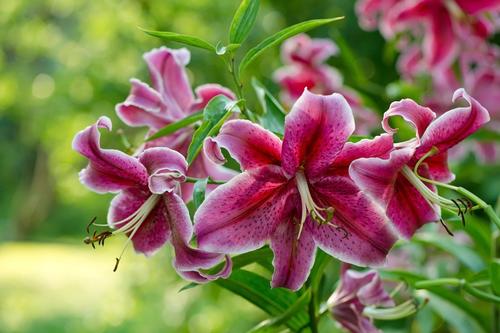
What to Do When the Flowers Fade
When your lilies have finished blooming, use scissors to snip off the flowers, leaving the main stem intact. As with other bulbs, the foliage produces the energy needed for next year’s flowers. Once the stems are completely yellow (which may take until late fall), they can be cut back to the ground.
Learn more about growing lilies here: All About Lilies, How to Garden With Lilies, Bloom Times for Lilies.

